Charlotte Police chief on officers killed in shootout: 'Most horrific thing I've seen in my career'
Charlotte-Mecklenburg Police Chief Johnny Jennings on the shootout that resulted in four police officers' deaths when a suspect opened fire as U.S. Marshals served a warrant.
CHARLOTTE, N.C. – A new timeline released Friday shows how four law enforcement officers were killed over the course of 20 minutes on April 29 while serving a search warrant in Charlotte, North Carolina.
Gunman Terry Hughes Jr., 39, killed Deputy U.S. Marshal Thomas M. Weeks Jr., North Carolina Department of Adult Correction (NCDAC) Officers Sam Poloche and William "Alden" Elliott, and Charlotte-Mecklenburg Police Department (CMPD) Officer Joshua Eyer. Four other officers were wounded in the line of duty that Monday.
"This is the deadliest attack on law enforcement in Charlotte's history. It is one of the deadliest, single incident attacks on law enforcement across our country," Daniel Redford, president of the Charlotte Fraternal Order of Police lodge, told Fox News Digital. "We've had to say goodbye to four heroes. If there's anything we can learn from this incident, as we do with so many other incidents, to prevent this from happening again and save officers' lives, first responders' lives, that would be the only takeaway."
Here's the latest timeline of the shootout released by Mecklenburg County District Attorney Spencer B. Merriweather III as part of his investigation into 23 officers who returned fire at Hughes on April 29:
April 29, 1 p.m. to 1:30 p.m.
Between 1 p.m. and 1:30 p.m. that Monday, members of the U.S. Marshals Service Carolinas Regional Fugitive Task Force arrived at Hughes' residence on Galway Drive in East Charlotte to serve a warrant for a felon in possession of a firearm.
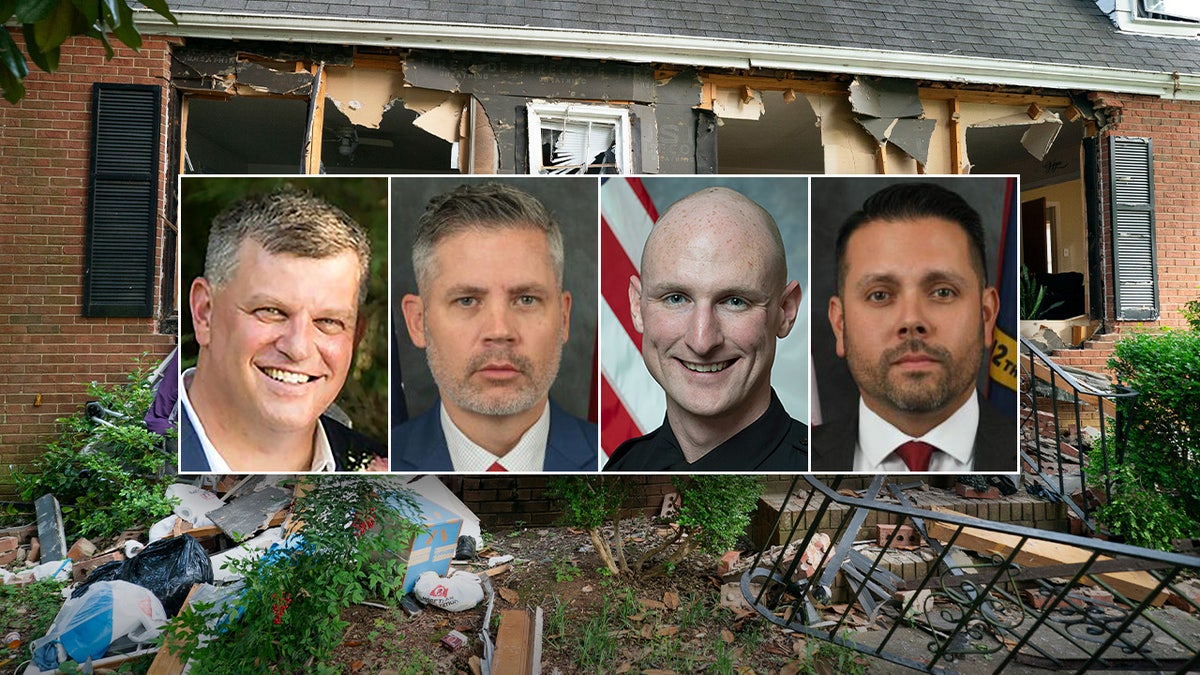
(L-R) Deputy U.S. Marshal Thomas M. Weeks, Investigator William "Alden" Elliott, Police Officer Joshua Eyer and Investigator Samuel "Sam" Poloche were killed in a police shootout in Charlotte, North Carolina on Monday, April 29, 2024. (U.S. Marshals Service via AP/NCDAC/Charlotte-Mecklenburg Police Department/Sean Rayford via AP/Getty Images)
"For the officers that were on this task force that were showing up at this house on that morning, they've probably done it 100 times or more," Redford said of the situation officers thought they were walking into that afternoon. "Similar … charges against the individuals to arrest. They've done it 100 to 200 times before, and it ended safely. You always keep in the back of your mind the dangers that you're going into. But you can't always think about the danger because then you're not going to be able to think clearly if that's all you're focused on."
"They've done it 100 to 200 times before, and it ended safely."
Hughes was standing in the threshold of the side door of his home when officers arrived at his home, which is located in a residential neighborhood near a public park.

Charlotte residents were shocked after the deaths of four officers following a shootout on April 29, 2024. (Charlotte resident)
When he saw officers arrive at his home, Hughes — a career criminal — retreated inside, and task force members used a loudspeaker to announce their presence and demanded Hughes exit the residence, Merriweather wrote in a letter to CMPD Chief Johnny Jennings to explain the results of his investigation. Shortly afterward, Hughes opened fire with a "Radical Arms RF-15 rifle."
North Carolina public records show Hughes had previously been charged with eluding arrest, looting, marijuana possession and manufacturing, driving with an expired registration, driving while impaired and more out of several different counties.
Hughes "then moved to fire from an upstairs side window and subsequently alternated between firing from the rear and side windows."
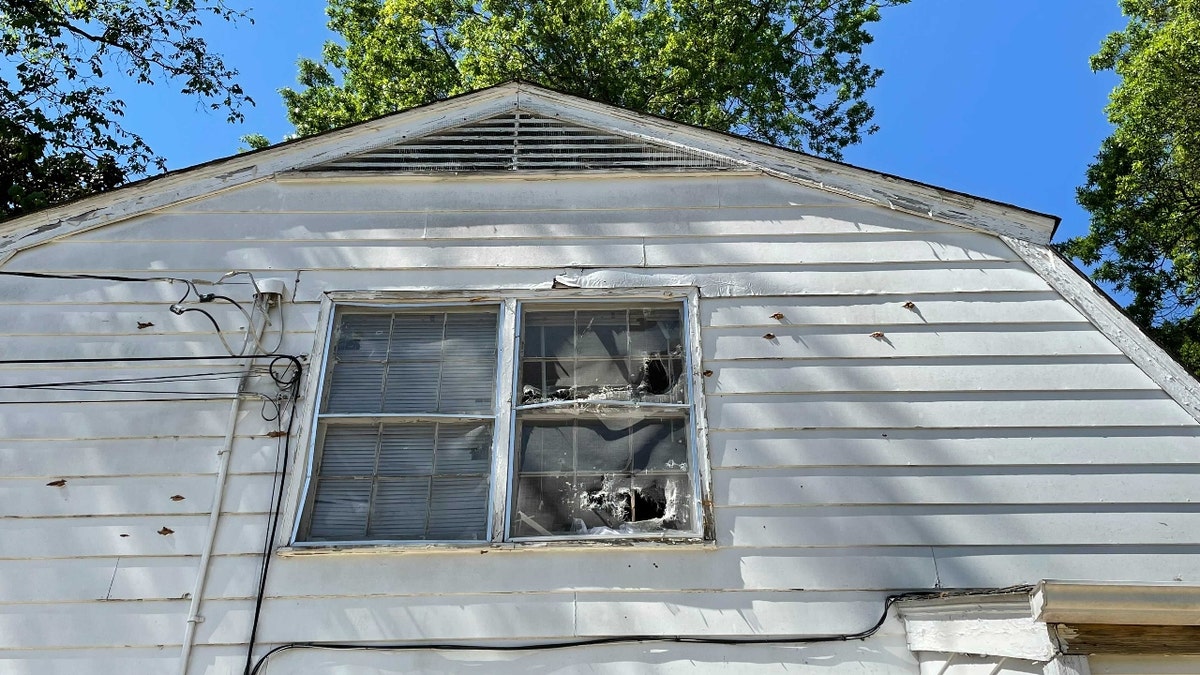
More than 100 rounds were fired during the fatal Charlotte shootout. (Audrey Conklin/Fox News Digital)
Weeks was struck as he and Poloche took cover behind a tree in Hughes' backyard while Hughes fired from his upstairs windows. Elliott and another task force member were then struck "at the fence line on the west side of the home."
1:33 p.m.
Eyer — the only CMPD officer on the NCDAC task force — was positioned in the front of Hughes' home and relayed to CMPD dispatch that shots had been fired and officers were down, Merriweather said. Eyer had access to a CMPD radio channel that task force members were not monitoring.
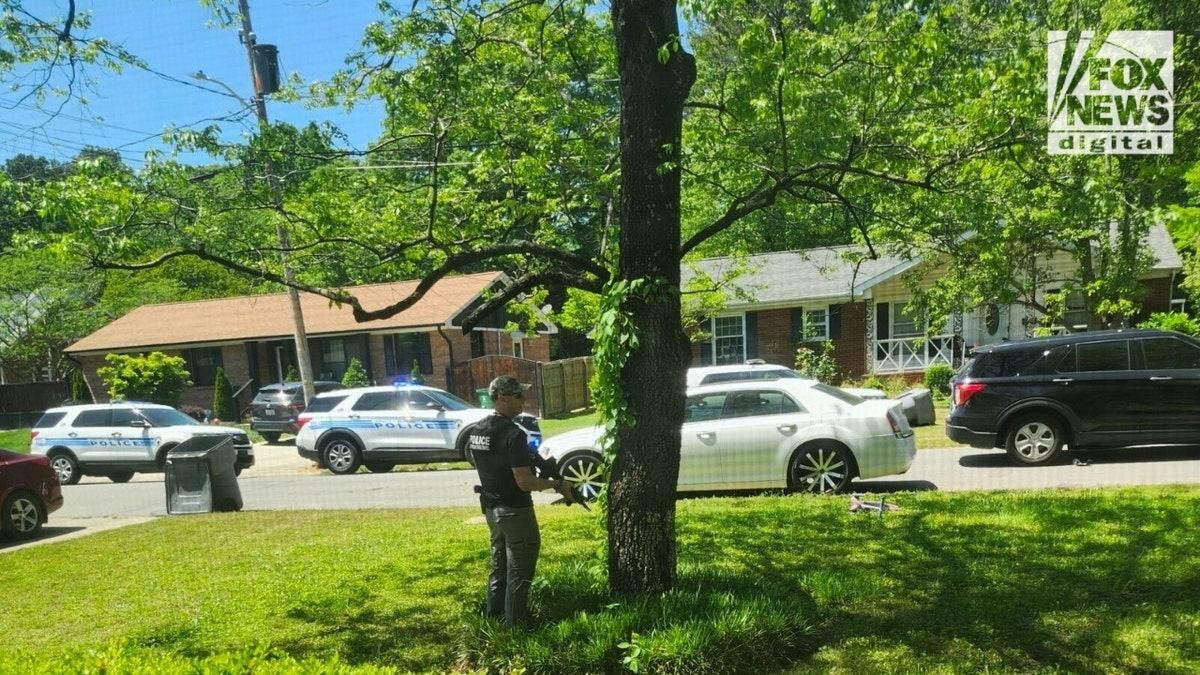
Charlotte police responded to a deadly shootout on Galway Drive on April 29, 2024. (Charlotte resident)
1:35 p.m.
Just two minutes after Eyer called in the shooting and reported officers down, "the first of hundreds" of CMPD officers began to arrive at the scene to help the fallen officers.
CHARLOTTE SHOOTOUT: 4 SLAIN OFFICERS SERVING WARRANT HAD ‘GREAT DISADVANTAGE,' EXPERT SAYS
"Officer Eyer and numerous other CMPD officers approached the rear of the decedent’s residence through the backyard of an abutting home, searching for a safe route to get to the three downed officers," Merriweather wrote.
1:46 p.m.
About 10 minutes after calling for backup, Eyer and other officers went to the treeline in Hughes' backyard where Weeks was struck by gunfire. Eyer and Poloche "were struck by additional shots fired by the decedent as they took cover behind this tree," Merriweather said.

The deadly shootout occurred at a house on Galway Drive in East Charlotte on April 29, 2024. (Audrey Conklin/ Fox News Digital)
"Three additional CMPD officers were also shot as they took cover in various locations behind the house," the DA wrote.
CHARLOTTE RESIDENTS SHOCKED AFTER 4 LAW ENFORCEMENT OFFICERS DIE, 4 OTHERS INJURED IN SHOOTOUT
1:50 p.m.
Approximately 20 minutes after Hughes began firing, he jumped out of a second-story window on the front side of his house while still holding his AR-15.
"At 1:50:28 p.m., officers in front of the residence communicated over CMPD radio that the decedent was down," Merriweather said. "Although officers in the rear of the residence received this information, officers on the side of the residence did not. Officers positioned in the backyard then began to evacuate TFO Poloche and Officer Eyer."
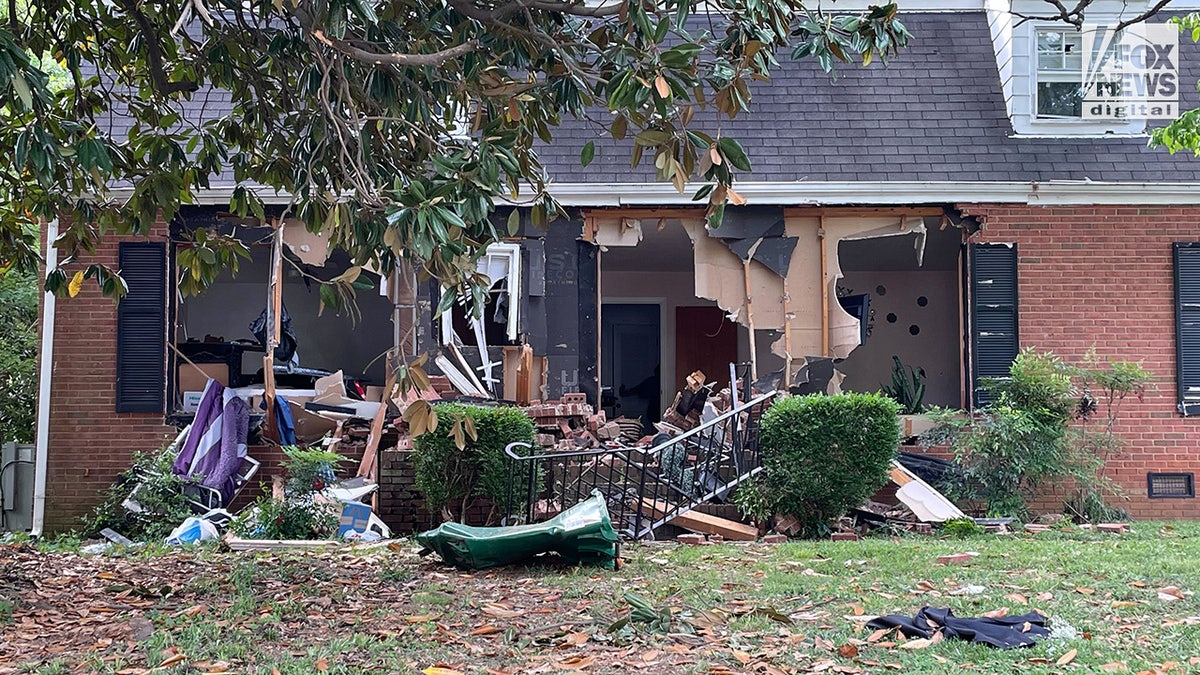
The home where four law enforcement officers were killed remains destroyed in Charlotte, North Carolina on Tuesday, April 30, 2024. Four officers were killed in a shootout a day earlier while trying to serve a search warrant. (Audrey Conklin/Fox News Digital)
The officers on the side of the residence who did not receive communication that the gunman was down "attempted to reach the injured TFO on the fence line to render aid," according to the DA.
At 1:50:42 p.m., while authorities were attempting to reach the injured officer, another officer saw movement in the upstairs side window where Hughes had been firing and shot a single bullet at the window.
Redford, the local FOP president, said communication becomes an unintentional issue with officers from so many different agencies all responding to a large attack.
"Communication in a situation like this is one of the more important things to do because that's how you relay dangers."
"That's how you relay where you need to go to where you shouldn't go to," Redford explained. "The one thing we always find in these mass incidents like this is: officers are responding, and we end up unintentionally blocking roads. You have 100 police cars parked alongside the road, which makes it harder for paramedics, fire departments, stuff like that to get through."
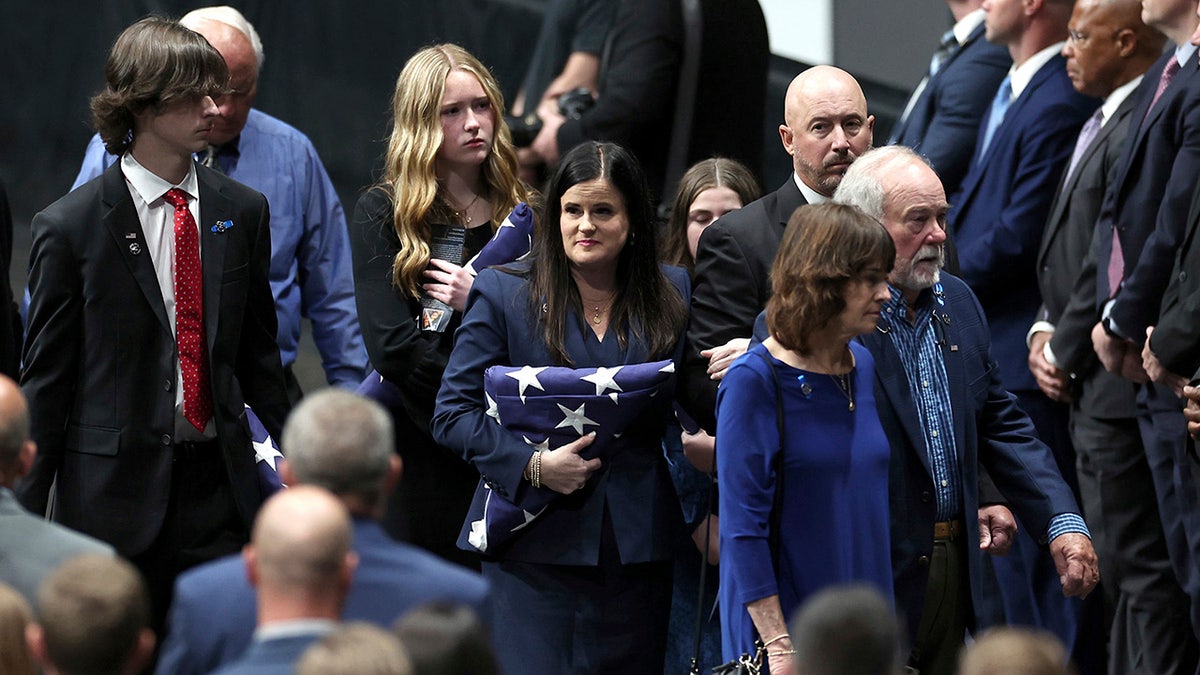
Kelly Weeks, center, the widow of slain Deputy U.S. Marshal Thomas Weeks Jr., glances over at attendees of her husband's memorial service at Bojangles Coliseum in Charlotte, N.C. on Monday, May 6, 2024. (Jeff Siner/The Charlotte Observer via AP)
1:50 to 2 p.m.
"Over the course of the next ten minutes, officers in the rear of the residence discharged cover fire at the rear window of the home as they evacuated [Poloche, Eyer and Weeks]," Merriweather wrote. "Officers on the side of the residence discharged cover fire as they evacuated the injured task force officer. At 1:59 p.m., CMPD officers used an armored utility vehicle to drive to the side fence line and evacuate [Elliott]."
2:39 p.m.
Hughes' girlfriend calls 911 and tells dispatch she is hiding in a closet in his residence with her 17-year-old daughter.
CHARLOTTE LAW ENFORCEMENT OFFICERS WHO DIED IN SHOOTOUT IDENTIFIED: 'FOREVER INDEBTED'

Police console each other at the memorial to fallen CMPD officer Joshua Eyer at First Baptist Church in Charlotte, North Carolina, Friday, May 3, 2024. (The Image Direct for Fox News Digital)
2:20 to 8:25 p.m.
Elliott, Poloche, Weeks and Eyer were pronounced dead from the hospitals they were transported to over the course of the next six hours.
Merriweather ultimately cleared the officers who returned fire at Hughes of any wrongdoing after completing his investigation into the shootout, saying "there is no question that the 23 officers who returned fire during this lengthy encounter did so in defense of themselves and of their fellow officers."
"This incident signifies the single deadliest assault on law enforcement in our community’s history," the DA said in the conclusion of his letter to Jennings. "If law enforcement officers had not responded to an imminently deadly threat with lethal force, as difficult as it is to imagine, the outcome could have been even more catastrophic. Accordingly, this review finds that the use of deadly force by law enforcement officers, resulting in the death of Terry Hughes Jr., was justified under the law."

Police console each other at the memorial for fallen CMPD officer Joshua Eyer at First Baptist Church in Charlotte, North Carolina, Friday, May 3, 2024. (The Image Direct for Fox News Digital)
Jennings also responded to the DA's findings, saying in an Aug. 1 statement that the four deceased officers "displayed the epitome of bravery" while assisting with the deadliest attack on officers in Charlotte's history on April 29.
"We will not forget their ultimate sacrifice for our community’s safety," Jennings said. "I am extremely grateful to the dedicated members of our Homicide Unit, Crime Lab and Crime Scene Investigations as well as the Mecklenburg County District Attorney’s Office who have carefully and meticulously reviewed approximately 1,100 videos and examined approximately 10,000 pieces of evidence."
CLICK HERE TO GET THE FOX NEWS APP
Redford noted that many of the officers who responded to the shootout on April 29 were not on duty that day.
"I think that shows you the dedication to law enforcement is that many of the officers who responded that day were on their days off, either at home somewhere with their family, caught wind of what was going on and put their uniforms on, got in their cars and drove into work, knowing they didn't have to, but that they came in because that's how important this was," Redford said. "That's how dedicated the men and women in this profession are to each other and to keeping our community safe."



